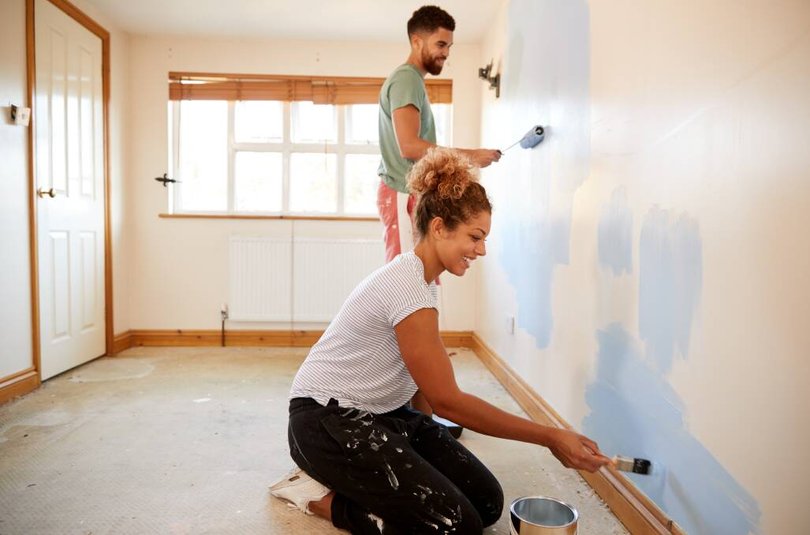First home buyers: how to save a 5 per cent deposit in six months for a $600k home

The countdown is on for first-time buyers hoping to enter the market with as little as a 5 per cent deposit, thanks to upcoming changes to the federal government's First Home Guarantee Scheme (FHGS).
From 1 January 2026, the program will relaunch with expanded eligibility, opening the door to many more would-be homeowners, including scrapping income caps and opening the FHGS to permanent residents and joint applicants who haven't owned property for some time.
How is the First Home Guarantee Scheme changing?
Sign up to The Nightly's newsletters.
Get the first look at the digital newspaper, curated daily stories and breaking headlines delivered to your inbox.
By continuing you agree to our Terms and Privacy Policy.The revamped FHGS will continue to allow eligible buyers to purchase a property with just a 5 per cent deposit, while the government steps in to guarantee the remaining amount, removing the need for costly Lenders Mortgage Insurance (LMI).
This means if you plan to buy a $600,000 home, you'd only need to front a $30,000 deposit.
But beyond the low deposit, there's some pretty significant shake ups.
The government is scrapping the income cap: buyers are no longer restricted by income thresholds.
Previously, this was capped at $125,000 for a single and $200,000 for joint applicants.
Come January, there will also no longer be a property price cap. Purchase price limits will be removed, subject to lender assessment.
And finally, there is now extended eligibility: individuals who have not owned property in the past 10 years, including permanent residents, can apply.
A great opportunity, with a caveat
Personal finance expert at Finder, Sarah Megginson, says the scheme is a game-changer, but buyers need to act now to get their finances in order.
"This plan will give all first-home buyers access to 5 per cent deposits when buying a home, making the prospect of home ownership far more realistic for some who want to enter the market," she said.
For example, if a property costs $850,000, a buyer needs to save a deposit of $42,500.

"Without this plan, they would also need to fork over a huge sum for Lender's Mortgage Insurance, which could be upwards of $20,000."
But Ms Megginson also warns that property competition will heat up even more.
"All first-time buyers will have access to this, so it enables a large number of people to buy a home, but does nothing to address supply," she said.
"A policy like this creates a lot of demand - which could see property prices in the affordable range increase, as first-time buyers battle each other to get into the market."
Your six-month saving window: Strategies to save $30K
If you want to hit the ground running when the scheme relaunches in January 2026, the next six months is your window of opportunity.
If you're on the average Australian salary of $100,000, your purchasing power sits around the $600,000-mark, meaning you'll require $30,000 for a 5 per cent deposit.
Ms Megginson says the key to building a $30,000 deposit quickly is breaking it down into smaller, manageable milestones.
"Saving $30,000 sounds like a massive mountain to climb, but smaller financial goals are easier to achieve and as you tick each one off, it gives you the momentum to keep going."
You're aiming for $5,000 per month, and to understand your personal financial picture, there's no way around creating a budget.
"Tracking where your spending is going is key to plugging those money leaks," says Ms Megginson.
"Take a look at your spending and split it into 'nice to have' and 'need to have'. Anything in the 'nice to have' category is a contender to cut back on."
Here are some more strategies to get serious about saving.
Move back home
While it won't be possible for everyone to take advantage of the privilege of moving home, if you have the ability to move back in with your parents or another family member and stop paying rent, you should absolutely take it.
Rents skyrocketed over the past few years, with Australia experiencing its longest stretch of continuous rental price growth in history, far outpacing wage growth.
No matter which way you slice it, rent takes up the biggest proportion of would-be homeowner salaries, keeping renters in a vicious cycle where they're unable to make headway on a house deposit despite demonstrating the financial ability to pay the equivalent of a mortgage.

Removing rent from the picture is undisputedly the way to turbocharge savings.
"It's short-term pain for long-term gain. It can help you save a fortune on rent and other bills to fast-track your savings goal," Ms Megginson said.
If you're in Sydney, for example, this one move could save you between $1700 and $3250 a month on rent alone, if your rent sits between $400 and $750 per week.
House sit or change rentals
If that's not an option, and you mostly work from home, consider house sitting as a rent-free alternative.
While it can be tricky to line up house sits perfectly, and the extra admin of applying for sits and then caretaking animals can be stressful, it's a creative way to stop paying rent (or even take a break while living with your parents).
The other option is to reduce your rental footprint by either sharing with more housemates, or changing rentals to a smaller property or more affordable area.
Trim your lifestyle spend
No one wants to go without their little luxuries, but remember, it's only for six months.
"Really, it's about looking at your overall lifestyle spending," said Ms Megginson.
"If you're serious about saving, you need to catch public transport instead of Uber, and stop getting food delivery altogether - it's seriously so expensive and so much cheaper to buy takeaways without the Uber premium. Eliminate any 'buy now pay later' accounts, too."
Subscriptions are the other place to look.
If you're signed up to three or four different streaming services, for example, it's time to cull it down to one.
You can even change that one platform every month or two, rotating through them all and catching up on shows.
But Ms Megginson is also quick to point out that this doesn't mean cutting out everything fun.
"Make sure you're not living off 2-minute noodles and stripping all the fun from your life! You don't have to sacrifice all the things that bring you joy.
"Just be mindful with your spending, so that when you invest in lifestyle extras - like takeaway coffee, a gym membership or Sunday brunch - you're spending on something you really enjoy, not just spending out of habit."
Evaluate and renegotiate your bills
Take stock of your household bills to ensure you're not overpaying for everyday services, from energy and health insurance to mobile phone plans.
"Finder has a Financial Fitness Challenge that runs through this process, where the average person without a home loan can save around $4,000 per year by comparing their household bills and getting a better deal," said Ms Megginson.
With a few smart tweaks, hitting a deposit goal by early 2026 is achievable for many first-time buyers, and could mean finally stepping onto the property ladder before competition heats up.
Originally published as First home buyers: how to save a 5 per cent deposit in six months for a $600k home
